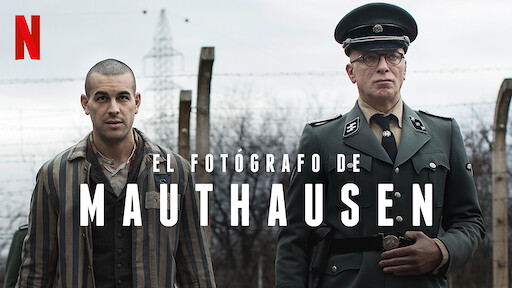El Fotógrafo (The Photographer)
EL FOTÓGRAFO
Óscar Palazón (2010)
¿Hasta dónde puede llegar la perversión y el sadismo del ser humano, cuando considera como trofeo el retratar en fotografías las muertes tortuosas y trágicas de personas?
Una historia realmente impactante que podría llegar a tocar las fibras más profundas de la sensibilidad del lector.
El escritor catalán Óscar Palazón ha buscado retratar literaria y descriptivamente los horrores y barbaries acontecidas en el campo de concentración de Mauthausen (Austria), las cuales son plasmadas en fotografías empleando al fotógrafo SS Karl Ihner, con la ayuda de los jóvenes Federico y Sebastián.
En la trama de esta escalofriante historia, basada en hechos reales, confluyen los personajes de un anciano fotógrafo catalán, superviviente del campo de Mauthausen, un nazi huido e instalado en Cambrils y un profesor de instituto. Sus historias se mueven en acontecimientos pasados y hechos presentes
Es una mezcla de inhumanidad, sadismo y crueldad, por parte de los nazis, y un sufrimiento inminente y doloroso, por parte de los prisioneros.
SEGUNDA FOTOGRAFÍA[…] Durante un instante da la impresión de que están posando para el fotógrafo: tres colegas –el de en medio con un aspecto bastante lamentable, dicho sea de paso– con el bello paisaje de la Alta Austria de fondo. Un marco incomparable, sin duda. Pero la fotografía no se produce. Todavía no. Antes de disparar su Leica, Ihner asiente con la cabeza. Es la señal que estaban esperando. Sin embargo, justo cuando se disponen a empujar el cadáver para que caiga sobre la valla, Ihner los detiene con un exabrupto:–¿Qué hacen idiotas? ¿Acaso no han oído el informe? El prisionero murió cuando intentaba saltar la valla. Al principio no saben a qué se refiere el sargento, pero Sebastián ata cabos enseguida. –Al revés, Federico –murmura. Y eso es lo que hacen. Como una especie de coreografía macabra, los tres realizan un giro de ciento ochenta grados con el difunto a modo de eje. Ahora sí. Lo cogen por la hombrera con una mano y por la pernera del uniforme con la otra, uno por cada lado, de la misma forma que transportarían un saco de avellanas. Y entonces, sin dilación, empiezan a balancearlo para coger impulso. Uno… Dos… ¡Y tres! El cuerpo se eleva como el de un saltador de altura. Por un momento parece que vaya a superar el obstáculo y caer al otro lado, pero no es así. Sebastián y Federico contemplan aliviados cómo va a parar al extremo superior de la alambrada emitiendo un chisporroteo espeluznante. Viendo cómo ha quedado el pobre desgraciado –con las piernas dentro y el torso fuera del recinto, y delgadas columnas de humo saliéndole de la espalda–, Federico frunce la nariz. Aún no se ha acostumbrado al olor a carne socarrada. […]
(EL FOTÓGRAFO: Segunda Fotografía,páginas 30-31)
Por otra parte, Óscar Palazón ha ido plasmando ciertos acontecimientos, lugares, noticias, fotografías, testimonios de supervivientes que, a modo de experimento, que terminan de dar sustento a esta novela. (Para mayor información visite su blog “El Fotógrafo: Un experimento de Óscar Palazón”).
Adicionalmente, y como ya decíamos, la trama de esta novela tiene un basamento en hechos de la vida real, la revista española XLSemanal ha reseñado algunos artículos relacionado a esto:
Finalmente, en el 2018 se estrenó la película “El fotógrafo de Mauthausen” en la que también se plasman las vivencias y los horrores de los dos españoles involucrados. Esta película está actualmente disponible en Netflix.
Esta es una gran e impactante historia que recomiendo a todos ustedes.
Enrique A. Simmonds B.
Bogotá (Colombia); 30/Mayo/2020.
THE PHOTOGRAPHER
Óscar Palazón (2010)
How far can the perversion and sadism of human being reach, when this considers as a trophy to portray in photographs the tortuous and tragic deaths of people?
A really shocking story that could touch the deepest fibers of the reader's sensibility.
The Catalan writer Óscar Palazón has tried to portray literary and descriptively the horrors and barbarities that occurred at concentration camp of Mauthausen (Austria), which were captured in photographs using the SS photographer Karl Ihner, helped by the young Federico and Sebastian.
The plot of this chilling story, based on real events, converges the following characters: an elderly Catalan photographer, a survivor of the Mauthausen camp, an escaped Nazi who has settled in Cambrils and a high school teacher. Their stories move around their past events and present facts.
It’s a mixture of inhumanity, sadism and cruelty, by the Nazis, and imminent and painful suffering, by the prisoners.
SECOND PHOTOHRAPH[...] For a moment it looks as if they are posing for the photographer: three colleagues –the one in the middle looking rather pitiful, by the way– with the beautiful Upper Austrian landscape in the background. An incomparable setting, no doubt. But the picture does not come. Not yet. Before shooting his Leica, Ihner nods his head. That's the sign they've been waiting for. However, just as they're about to push the body over the fence, Ihner stops them with an outburst:–What are doing, idiots? Haven't you heard the report? The prisoner died when he tried to jump the fence. At first, they don't know what the sergeant means, but Sebastian ties up the ends right away. –Upside down, Federico –he murmurs. And that's what they do. As a sort of macabre choreography, the three of them make a 180-degree turn with the deceased as their axis. Now, they take him by the shoulder pad with one hand and by the leg of the uniform with the other, one on each side, in the same way they would carry a sack of hazelnuts. And then, without delay, they start to swing it to get momentum. One... Two... And three! The body rises like a high jumper. For a moment it looks like it's going to overcome the obstacle and fall to the other side, but it doesn't. Sebastian and Federico look on in relief as he stops at the top of the fence emitting a hair-raising sizzle. Seeing how the poor wretch is left –with his legs inside and his torso outside the enclosure, and thin columns of smoke coming out of his back– Federico puckers his nose. He has not yet grown accustomed to the smell of scuffed flesh. […]
(THE PHOTOGRAPHER: Second Photograph,pages 30-31. Translated from the Spanish version)
On the other hand, Óscar Palazón has been writing and publishing some real facts, places, news, pictures, survivors’ proofs, in an experimental way, which complement this great story. (For more info, visit his blog "The Photographer: An Óscar Palazón's Experiment").
Additionally, and as we said, the plot of this story has a real-life basement, the Spanish magazine XLSemanal has reviewed some related news.
Finally, in 2018 Netflix released the film “The Photographer of Mauthausen ”. This movie also shows the experiences and horrors lived by two related Spanish men.
This is a great and shocking story that I recommend to all of you.
Enrique A. Simmonds B.
Bogota (Colombia); May 30th/2020.






Comentarios
Publicar un comentario